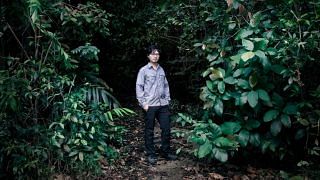There is a comical scene in Sofia Coppola’s Lost 01 in Translation, where it portrays Bill Murray as a jaded old actor trying to take instruction from a manic Japanese director for a Suntory commercial. All he had to do was look in the camera and say “Suntory time” at the end. But the director constantly chides Murray’s character for not conveying enough passion and intensity, and myriad other nuances. Murray never got it, but the rest of the world do: It is indeed Suntory’s time now.
Suntory owns two whisky distilleries: Yamazaki, opened in 1923 and which is Japan’s first commercial distillery (and is also where Hibiki and the entry-level Kakubin are blended), and Hakushu, a distillery nestled deep in nature amid forests and mountains. Between these two distilleries, Suntory has raked in numerous awards for three whiskies. Notable ones include the Gold award at the International Spirits Challenge 2003 for the Yamazaki 12 Years (a first for Japanese whisky), several “World’s Best Blended Whisky” medals for Hibiki at the World Whiskies Awards, and three “Distiller of the Year” awards for Suntory in 2010, 2012 and 2013 at the International Spirits Challenge.

The answer to why these whiskies in particular – and Japanese whiskies in general – are getting the global recognition it deserves only as late as the 21st century is simple: The market before 2000 was almost entirely domestic. But to answer what makes these spirits so special will require a little more explanation, and the Hakushu Distillery will provide just that.
A PIONEERING SPIRIT
Hakushu is located at the base of Mount Kaikoma in the Southern Alps of Japan, and it’s easy to see why this distillery is also known as the “Forest Distillery”. Quite unlike the distilleries of Scotland, which often find themselves sitting in vast, open plains and/or next to lakes and rivers, Hakushu is positively hugged by trees and mountains.

“Hakushu co-exists with nature,” says Mike Miyamoto, Suntory’s global brand ambassador and former master blender. He shares how the four seasons can be experienced more acutely here than in Scotland, and you can almost taste the spring flowers or autumnal leaves in the air. This actually influences the whisky much more than you would think. He says: “Thanks to the angels’ share (which refers to the spirit lost to evaporation each year), whisky will escape. But this creates room for outside air to occupy.
“Good whisky needs good water, and we have an excellent source – thawed snow from the peak of mount Kaikoma.” Because this water is refined by the granite of the mountain, it retains its incredible softness – a contrast to Yamazaki’s slightly harder water.
This explains Hakushu’s herbal flavours. However, the subtle smokiness that distinguishes it from its siblings is achieved in a rather unusual way. Instead of just creating a mildly peated whisky right off the bat, the distillery creates two kinds of unpeated malts, as well as a heavily peated 12-year-old one, and then marries all three to create the right balance for Hakushu.
This is to ensure it will never taste overpoweringly smoky, as the former method – which is probably less of a hassle – could result in unpredictable peat levels in the malt.
The reason Hakushu can easily make whisky in a variety of styles is that it has an array of pot stills in the distillery. Not only do some differ in size, but they also come in four different shapes. Combine that with the peated and unpeated barley and five types of casks, and you have a distillery that is capable of creating over 40 types of whisky. In fact, throw in Yamazaki’s unique combination of resources (they also use Japanese Mizunara oak casks) and Suntory is able to put out over 100 styles – which is comparable to what the whole of Scotland can produce.

“Japanese distillers need to be self-sufficient,” adds Miyamoto. “If the Scots need a different type of whisky, they can just call another distillery and trade among themselves. There are over 100 distilleries there, but Japan has only nine.”
Japanese whisky is actually more similar in style to Scotch, compared to that made by other whiskey-producing countries like the US, Ireland and Canada, which explains why it follows the Scottish spelling of whisky (with no “e”). But Suntory’s founder, Shinjiro Torii, had a different vision for the future of whisky in Japan.
Because Japan in the 1920s was hardly advanced, importing bourbon and Scotch was a pain, which led to Torii’s decision to create a whisky for his people. And so he hired Masataka Taketsuru, who had experience working in Scottish distilleries, and together they set up the Yamazaki Distillery. Taketsuru eventually left Suntory to start the Yoichi Distillery, which produces the
other immensely popular whisky – Nikka.
“There are several rumours regarding the real reason why Taketsuru left, but many of us believe it was because he had differing views from Torii. He wanted to create Scotch whisky in Japan, but Torii wanted to make Japanese whisky.”
GOING FOR GOLD
When attaching “Japanese” before any food or beverage not native to the country, chances are you’re going to get something very bizarre. Wasabi beer? Check. Octopus ice cream? Why not? Canned bread? Bring it on.
A little surprisingly (and very thankfully), the only thing strange about Suntory The Premium Malt’s is its name. Unfortunate apostrophe aside, The Premium Malt’s lives up to its name.
It has the creaminess of stout without the heaviness, and the crispness of ale without being overwhelmingly dry. It’s technically a pilsner, but with a decidedly more intense aroma than others in this category.
Because of the ingredients used – a selection of five different malts, with a greater percentage of diamond malts than other beers – and its double decoction method (a process of extracting a lot of malty flavour from the mash), The Premium Malt’s has an almost umami-like flavour that goes exceptionally well with Japanese cuisine – which was the intention all along. But considering all the ingredients, save for the water, are imported from Europe, what exactly makes this Japanese? It’s the process.
Musashino Brewery, where The Premium Malt’s is made, isn’t the quaint, coppery hued, brick-walled brewery you’d imagine most look like. It’s bright and almost clinically clean. You would be hard-pressed to find a speck of dust on the premises.



There is even an “air corridor” that connects the visitor area – where you can look into steel fermentation vats – to the rest of the brewery where more delicate processes are performed, and the air is kept as pure as possible by making sure one door is always closed before another opens.
Even when the golden brew is safely in the can, each can is inspected by machine and by hand to ensure that it hasn’t been scratched or dented. But it’s all worth it, because The Premium Malt’s became the first Japanese beer to win the Grand Gold medal from Monde Selection, a company that specialises in quality awards for food and drink products.
The Japanese have elevated obsessive perfectionism to an art form. Even though the products didn’t originate in the land of the rising sun, they’ve made it so that whatever they put out aren’t just good copies – they are memorable originals. It’s also the reason tipping is considered an insult over there – why would anyone want to accept charity for just doing their job well?

Show your appreciation by just enjoying it as thoroughly as they did in making it. Gulp and then exclaim. Loudly. Clink glasses frequently. Laugh out loud more. Elevate your indulgence to a spiritual level – the Japanese already do.







